Yggdrasil Singular
APx555 Report for Yggdrasil Less is More
APx555 Report for Yggdrasil More is Better
APx555 Report for Yggdrasil Singular
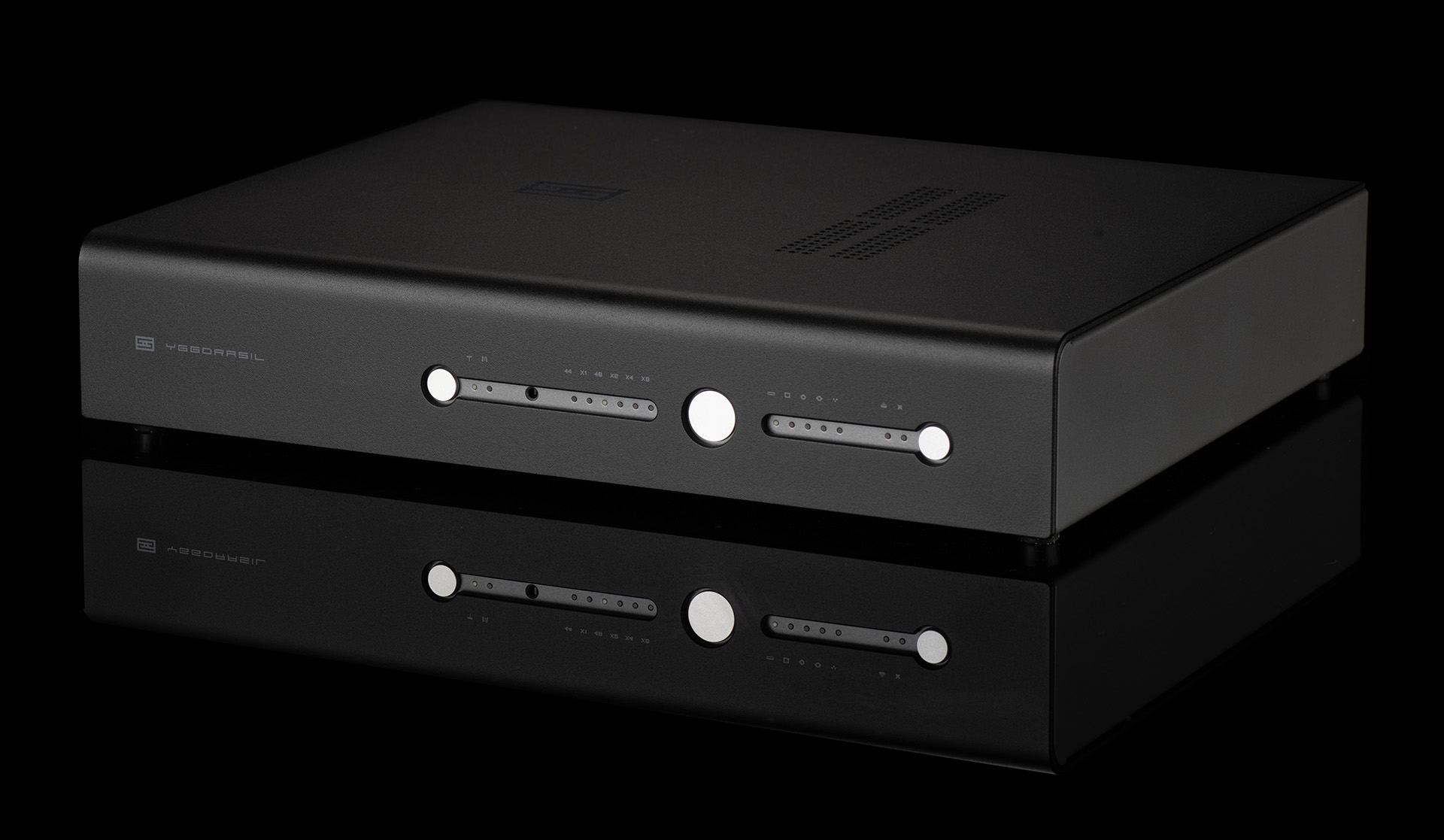

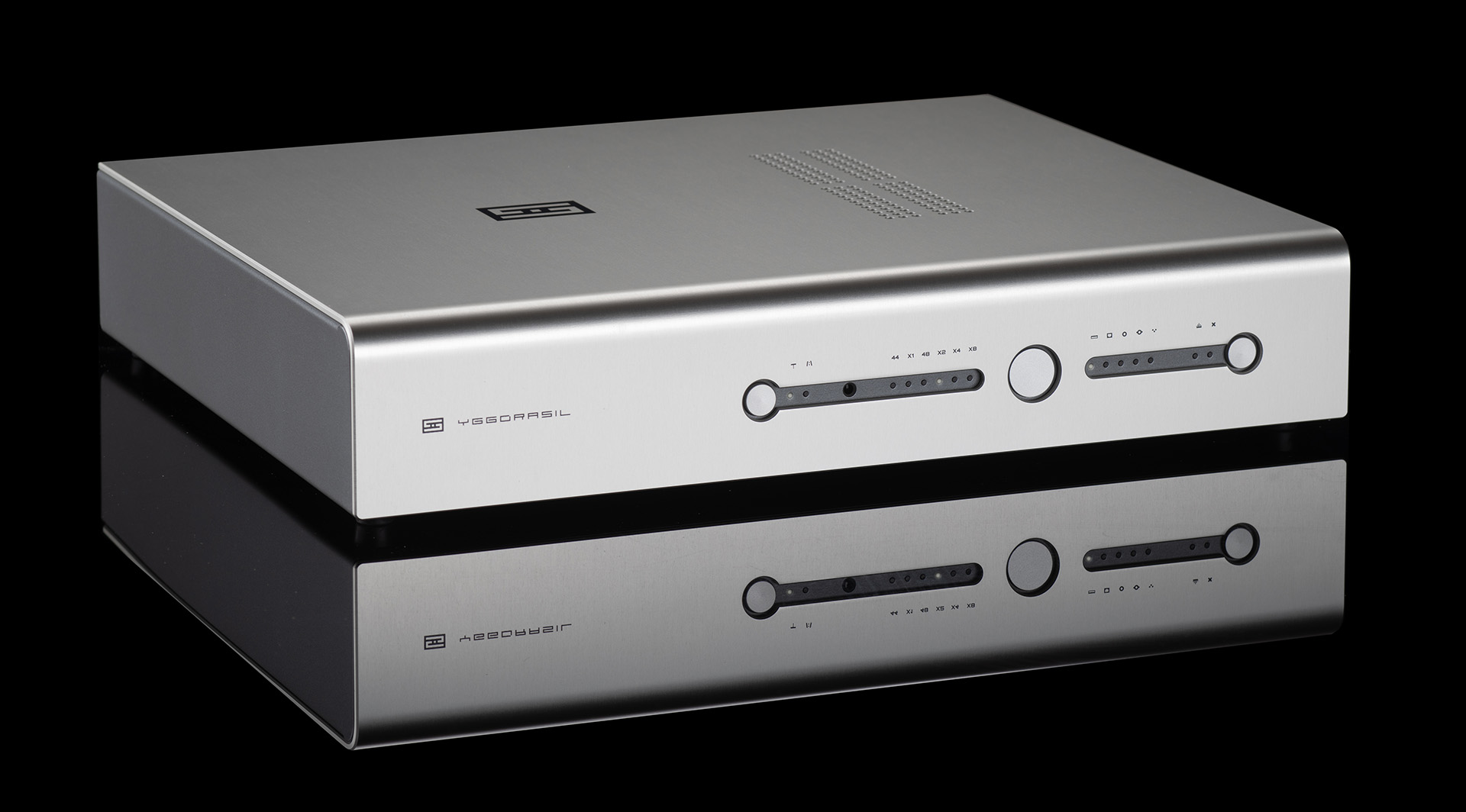
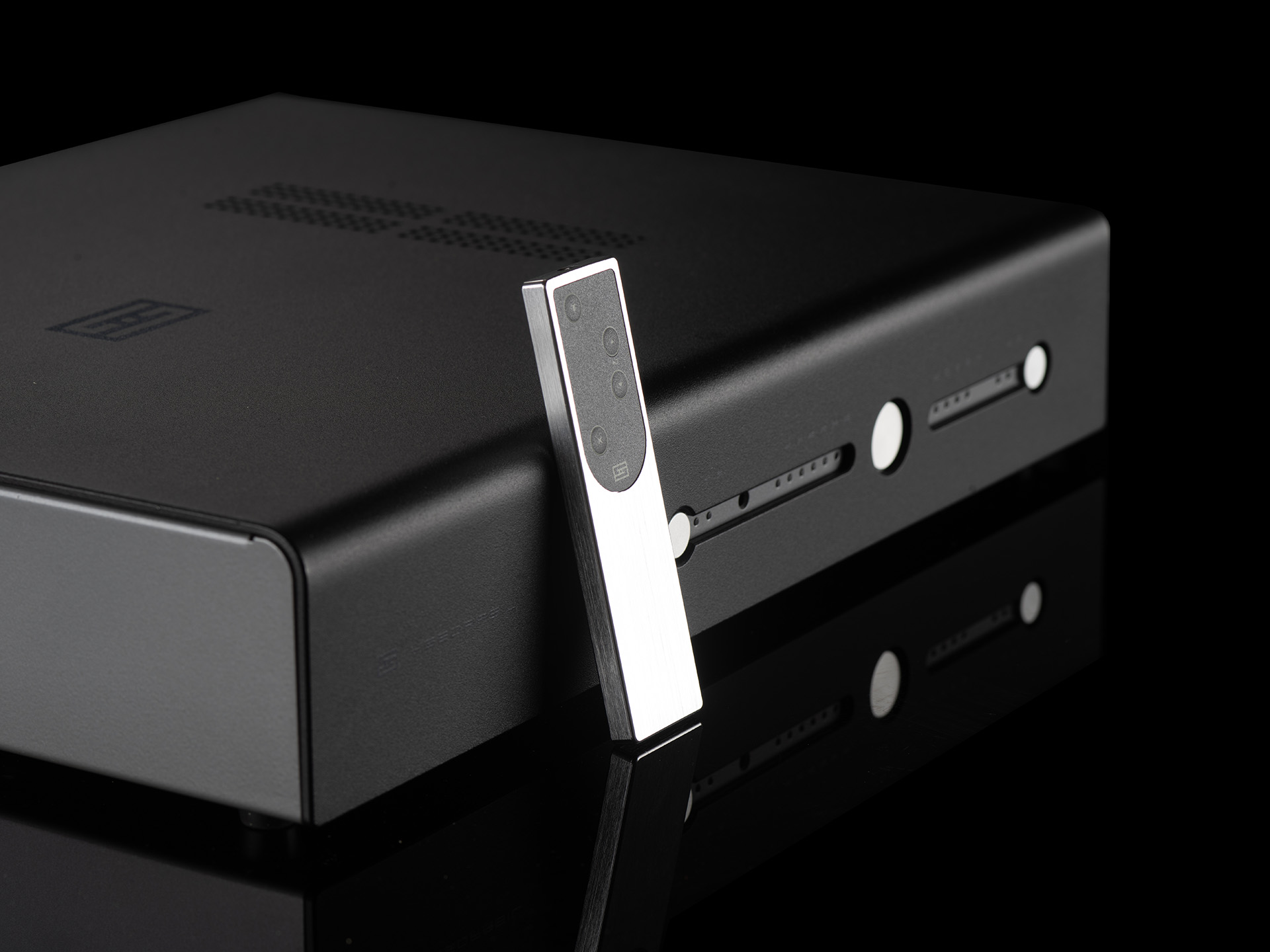
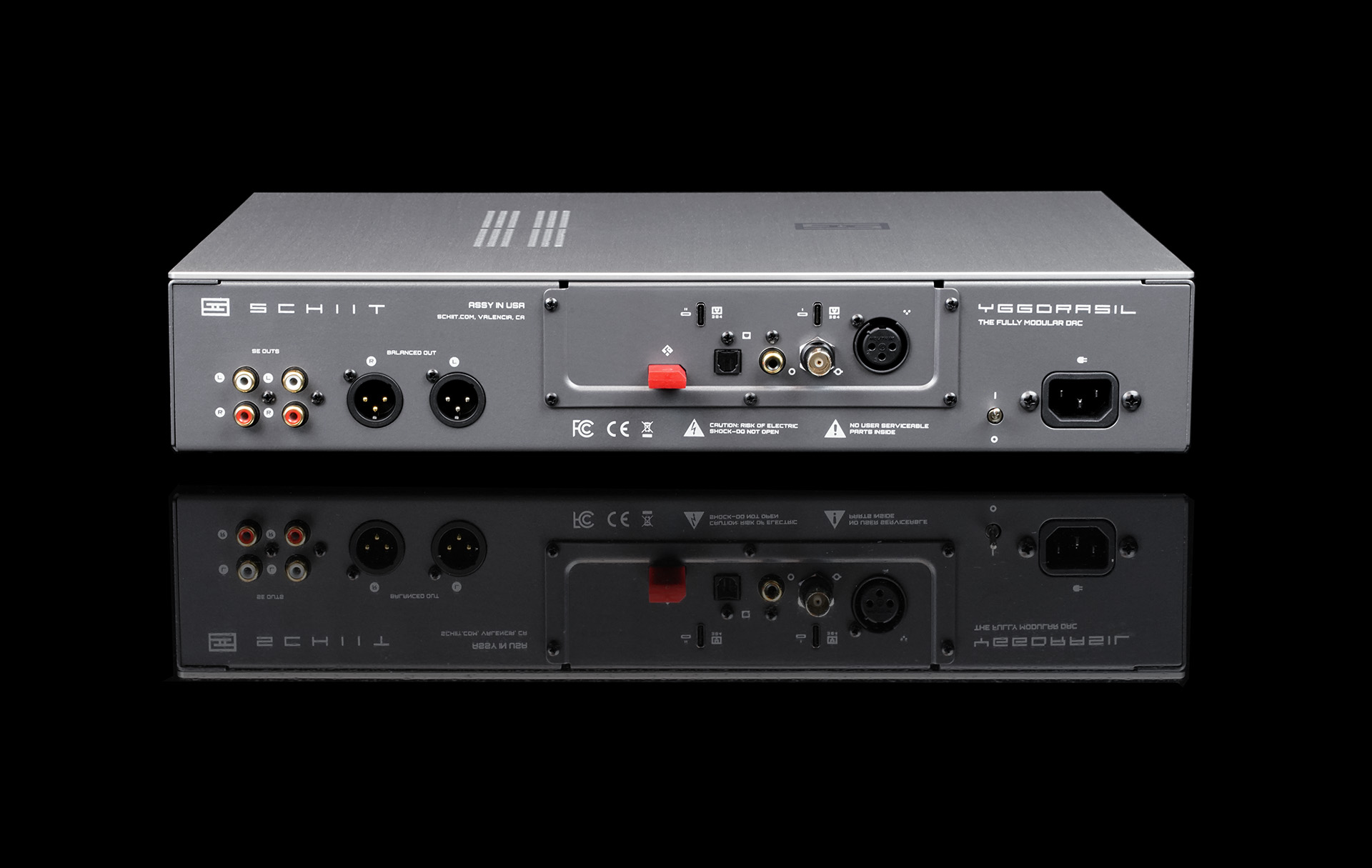
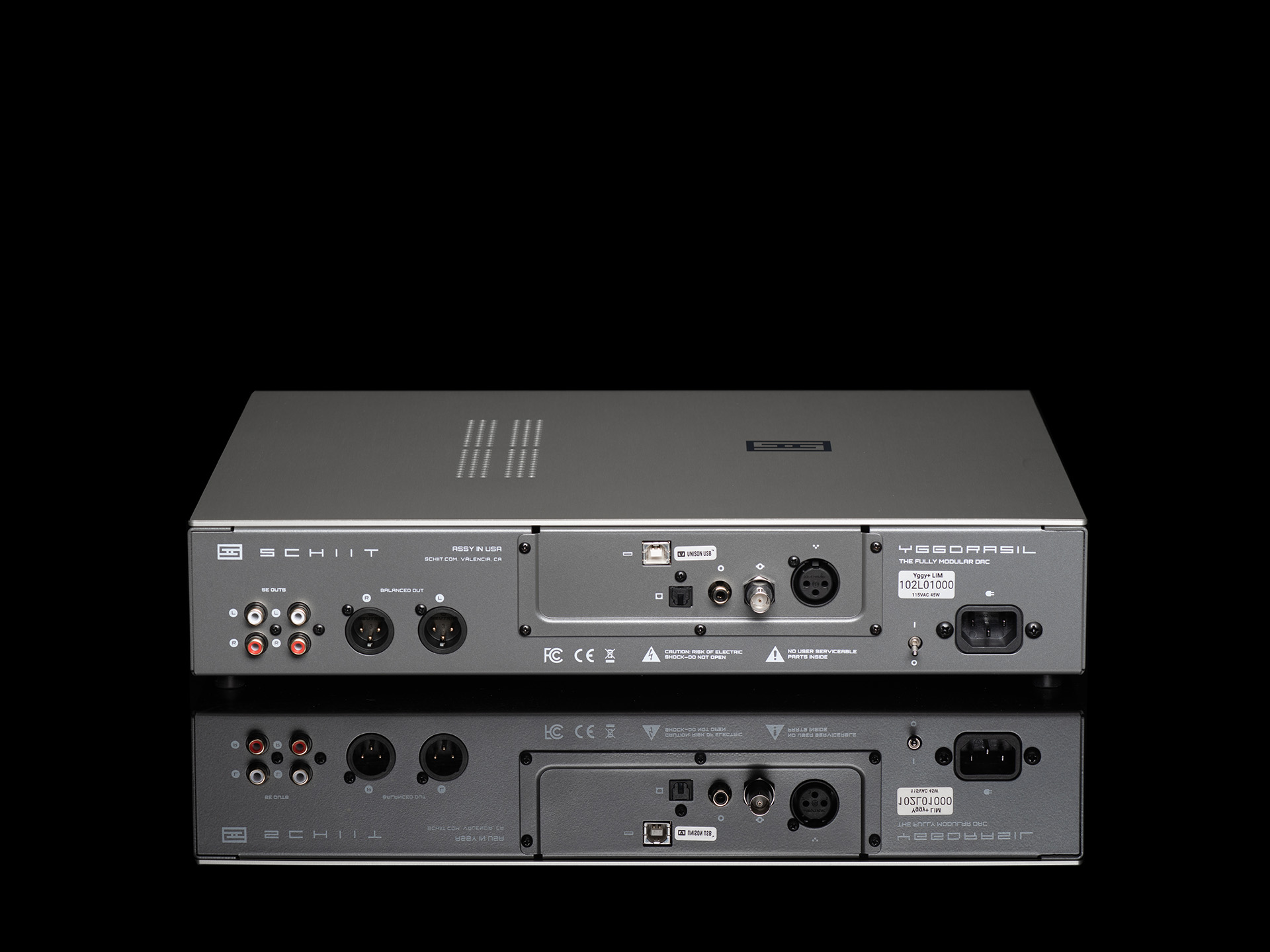
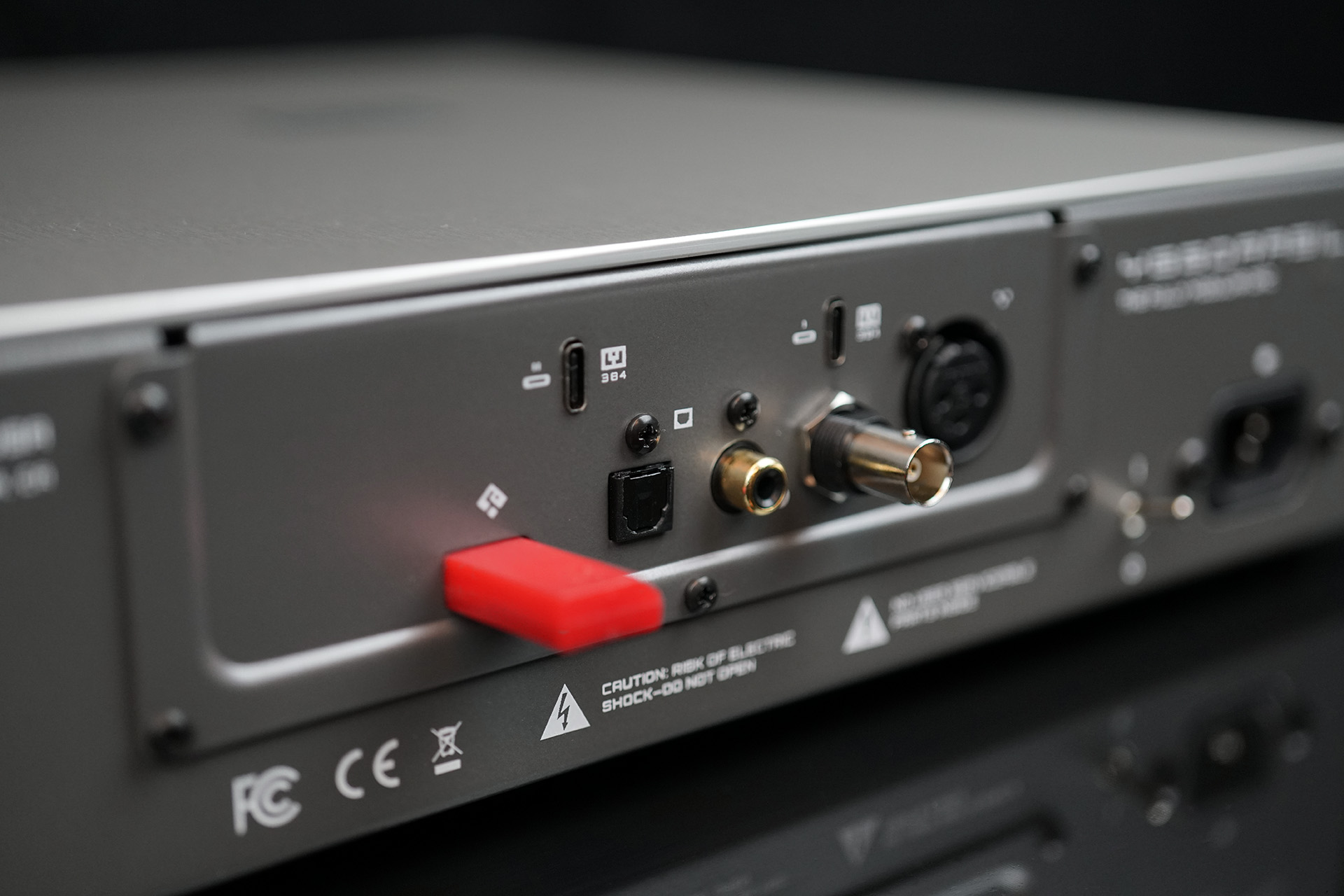
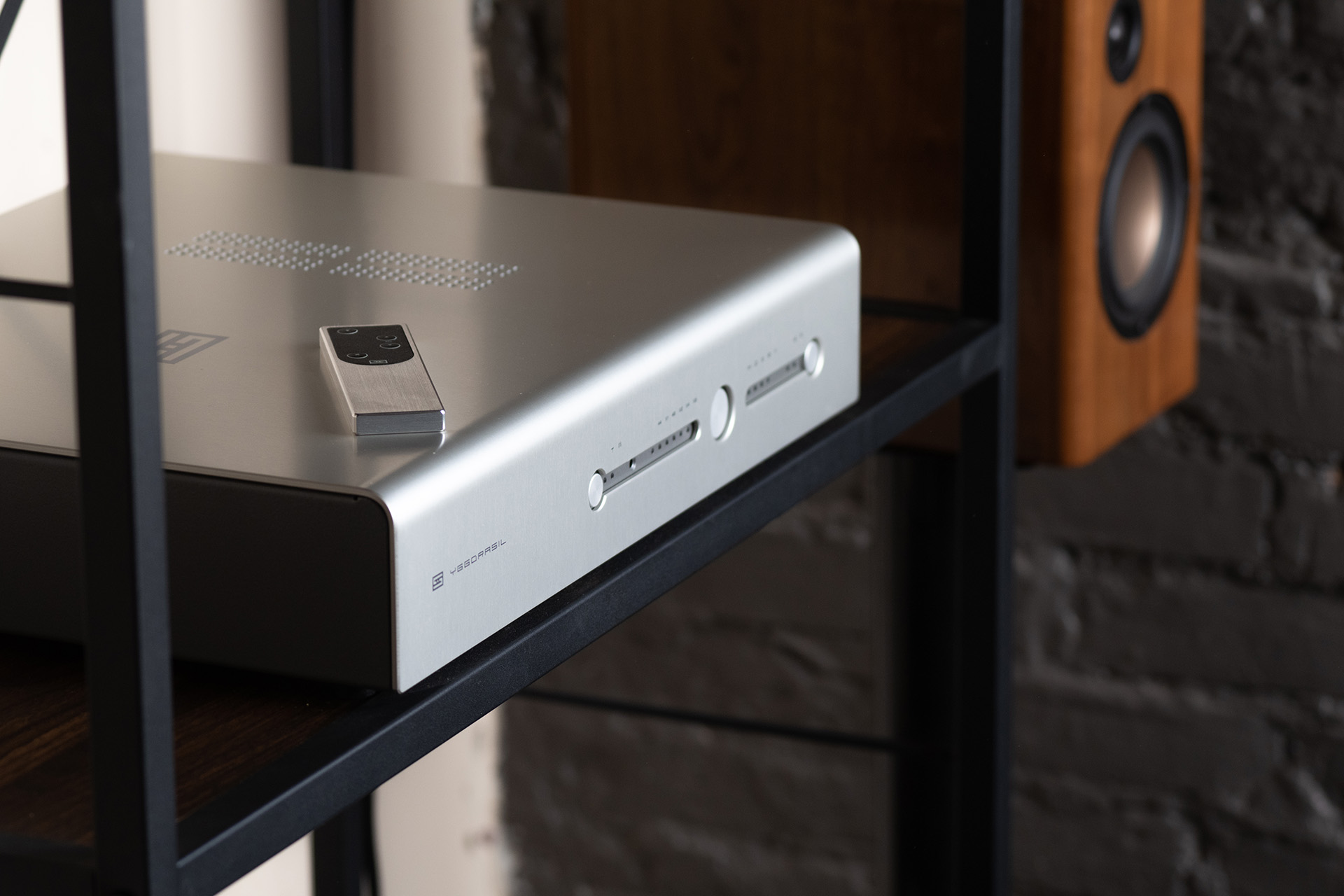
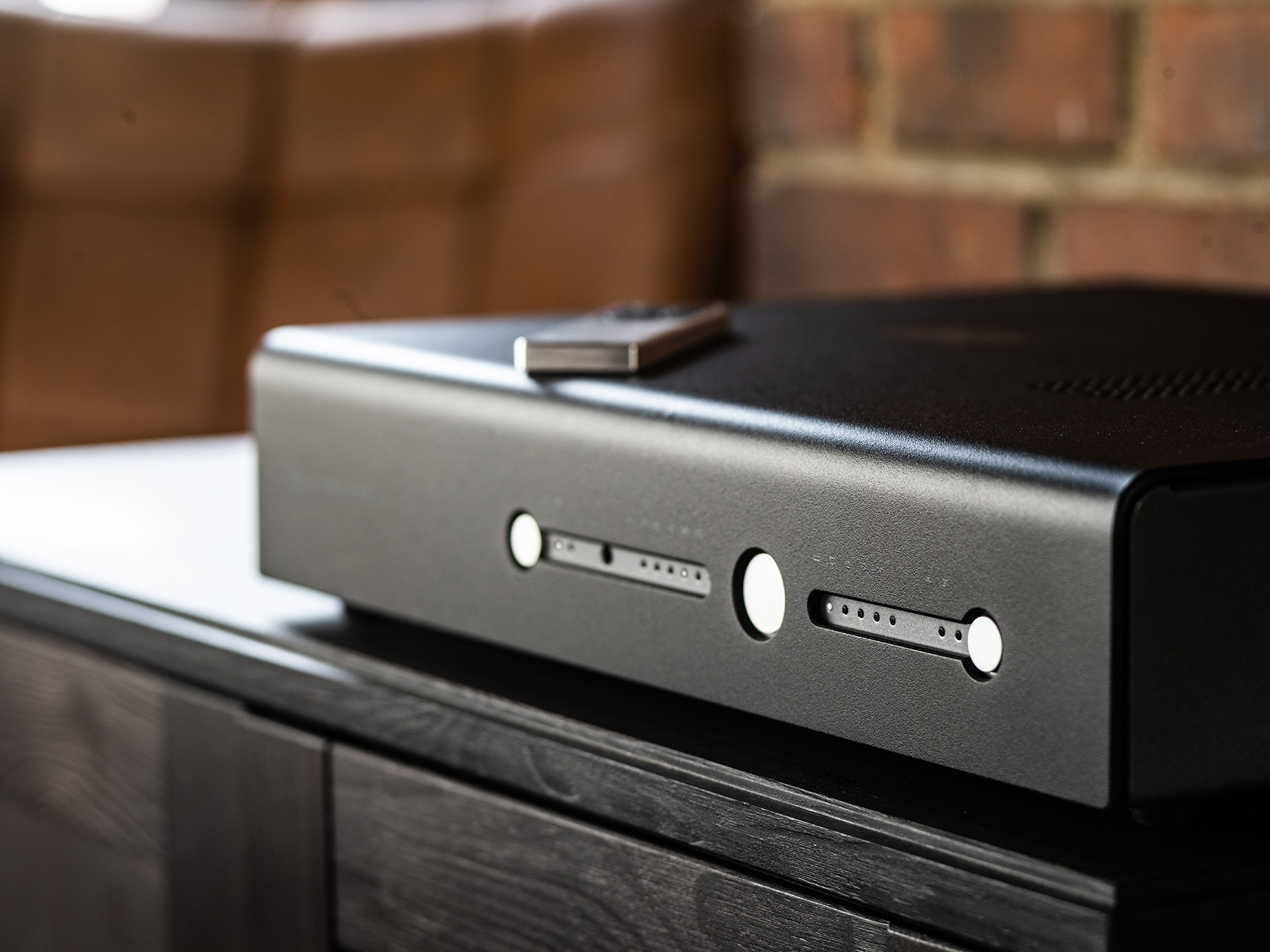
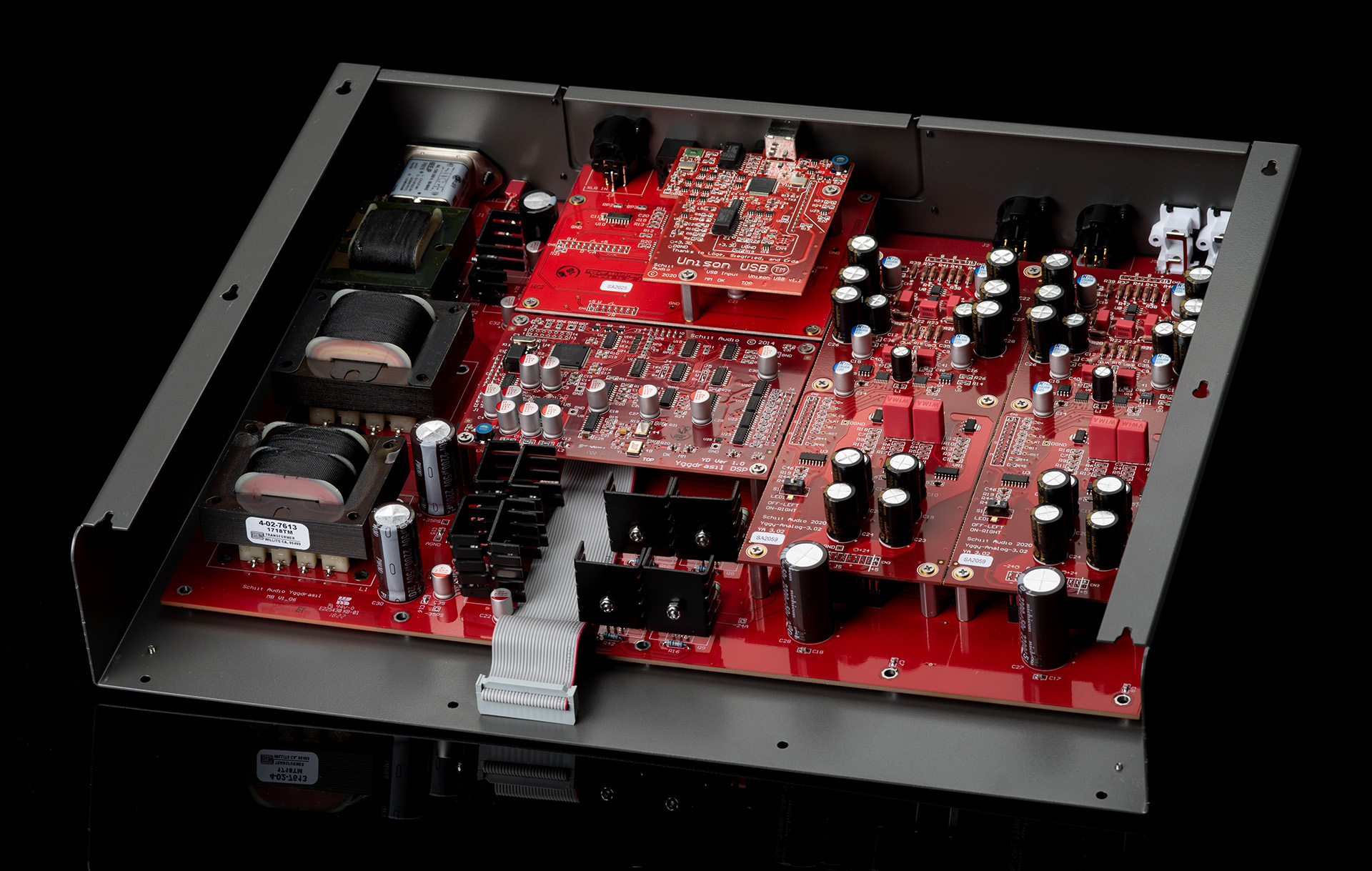
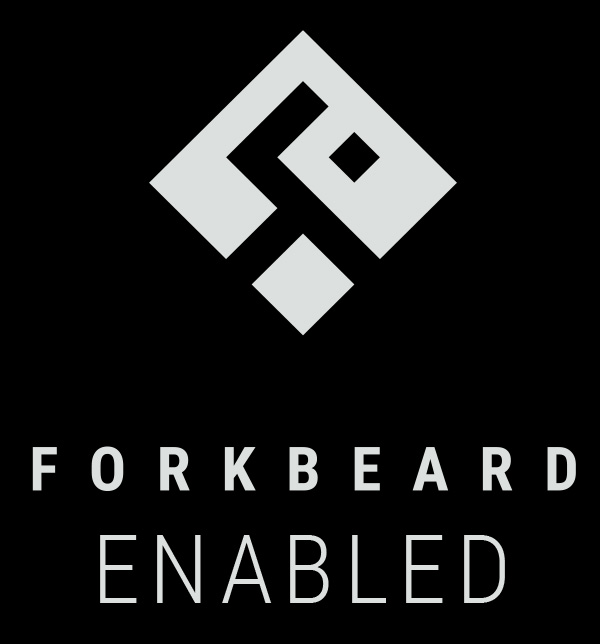 “The Forever DAC?” Yes. Introduced a decade ago, Yggdrasil is still compared head-to-head with the most expensive DACs in the world. And, unlike those car-priced designs, Yggdrasil’s complete modularity means you have options now—and assurance for the future.
“The Forever DAC?” Yes. Introduced a decade ago, Yggdrasil is still compared head-to-head with the most expensive DACs in the world. And, unlike those car-priced designs, Yggdrasil’s complete modularity means you have options now—and assurance for the future. APx555 Report for Yggdrasil Less is More
APx555 Report for Yggdrasil More is Better
APx555 Report for Yggdrasil Singular
"The below are the claims of the digital filter/interpolator/sample rate converter in Yggy:
Hey, I saw there was a $500 discount for Yggdrasil owners when buying Yggdrasil Singular, how do I get that?
Yes. there was a $500 discount for customers who purchased an Yggdrasil from us or from an authorized distributor during the pre-order phase. We are extending that discount to orders placed before 12/31/2025. Place an order for Yggdrasil Singular and contact us so we can validate your Yggdrasil ownership and apply the discount.
Can I get the Forkbeard and 2x Unison 384 input cards on my Less is More or More is Better order?
Yes. Contact us after you have placed your order so we can add in this option. This affects 4 internal boards, including the DSP board, and adds $400 to the cost of your Yggdrasil.
How about Forkbeard, Unison, and Yggdrasil Singular as upgrades for my current Yggdrasil?
We'll have those up on the Upgrades page in October.
What is Yggdrasil?
In Norse mythology, Yggdrasil is the World Tree from which all springs. Pretty cool name for a DAC, huh? Well, except for the unpronouncible bit. Call it Yggy. We won't be offended.
“Wrap it Up - Put A Bow On It.”
"I'm on the waiting list for the Byggy. But I'm buying a new unit, rather than trading in my LIM. It's just too good to let go of yet."
"So last week I was invited down to the Schiitr for a secret project event. When I got there I discovered that it was to be a double-blind test (where neither the presenter nor the listener knows which is which) of two new iterations of the Schiit Yggdrasil (the Yggy to those of us who don't speak Norse) and the current model. Jason has helpfully named the units the Less is More, the More is Less, and the OG (original)."
"The easy and best sounding story for any of these comparisons is the little guy (in this case the cheapest) overcomes the most expensive goliath in the room. For this tale, that low hanging fruit unfortunately wasn't the case for these reviewer's ears. It seems that Mike Moffat and company did a stellar job with the latest version of the Yggdrasil ($2,599). If you are looking to save a little money on the purchase, I would recommend the Schiit Yggdrasil More Is Less ($2,349). For the most analog sounding device of the three, the Less Is More ($2,199). This is perhaps the biggest trick of the whole experience in a nutshell, for more tubelike experiences rarely measure the best. But obviously there is a whole lot more articulating in the wheelhouse here, and once again the perceptible changes are very small. This opens it all up to personal preference a little more and hopefully, just a little more FUN."
"As for the sound differences between the LIM and the OG in my system, the LIM was the clear winner. Yes, less is apparently more. When I was a kid we used to hear about the importance of the 3 R's, reading, 'riting and 'rithmetic. Well with the LIM, we have a new set of 3 R's, resolving, relaxing and right. While the two DACs share a common sound, clear differences are heard in direct comparisons between the two. The LIM has a smoother sound. It is less edgy in the treble. The midrange is a tad warmer. The music, and I hate to use this term, seems to arise out of a blacker background, one that has less noise. Perhaps this reduction in noise results in the sonic improvements I hear."
"Overall the Yggdrasil Analog 2 represents the pinnacle of Schiit's innovation and years of experience in the audiophile market. For what it is worth, it also places amongst the best of the best in terms of performance and value for money in what a digital to analogue convertor offers. At $2399, the Analog 2 represents a sizeable investment and one which should not be taking lightly. However, for the budding audiophile who wishes to experience full immersion and the best of what music can be rendered, a listen to the Yggdrasil should not warrant a second thought. With a generous $550 upgradability option plan, true to Schiit's word, original owners of the Yggdrasil are able to send their device to Schiit's warehouse for a worthwhile in-house modification. Together with a durable piece of kit and warranty, the Yggdrasil Analog 2 is a highly recommended end-game purchase."
"When reviewing a product, absolute performance is of course something that one attempts to evaluate, but price needs to be taken into consideration as well. It's fair to say that, at its asking price, the Schiit Audio Yggdrasil DAC is a top tier performer with amazing value. It features excellent build quality with an impressive five-year warranty, and although it's missing a few features such as volume control and DSD support, I found its performance--both on its own terms and in relation to its price--more than made up for these omissions."
"Schiit have done their job. As a reference piece the Yggy Analog 2 delivers in spades. For detail and musicality, I have not heard better. The large deep soundstage speaks of levels of resolution not achievable with Sigma/Delta DAC chips when reproducing PCM. The incredible neutrality of the tonal balance says the Yggy adds nothing that does not belong there to the music. If I have any complaint it is that the presentation is sometimes a little more crisp than I prefer being an analog and tube guy at heart, but that being said, I have listened to $50,000 DACs that I can't say sound better. If you are in the market for a reference DAC, or simply have the cash for one, you would be doing yourself a disservice to not audition the Schiit Yggdrasil Analog 2."
"With the Schiit Yggdrasil Analog 2 we see a DAC with no additional feature set on which to fall back should it materialise as an also-ran at its price point. Buyer appeal is determined solely by its performance as a converter of digital audio to analogue. And boy, does it deliver, cutting us a huge chunk of the high-end's digital audio cake but without the associated price premium, in turn free-ing more of our budget for a top-flight server/streamer. Because Mike Moffat, multibit, medical, maths and modular. Astonishing for a product made entirely in the US of A."
"Schiit's flagship converter, the Yggdrasil Analog 2, sells for a fraction of the cost of the best high-end converters, but it's right up there in performance."
"In its Analog 2 version, the Yggdrasil DAC marries affordability to exceptional sound quality courtesy a bespoke DAC architecture from one of hi-fi's most pioneering digital designers. The Yggdrasil provided beautiful, musical sound even when fed challenging recordings from digital's early days. Clear imaging, large and solid soundstaging, linear frequency response, and a particularly fabulous midrange all make the Schiit Yggdrasil an excellent DAC at any price."
"Just when you think the Gen V is good, the Yggdrasil is even better. You wouldn't believe how much musical information is contained in those 44/16 files; and just how much lesser DACs leave behind. Brings those old or even bad recordings into a new light. Monster dynamics, bass that stops on a dime, tight precision, decay and ambient cues that don't suddenly disappear when they are not supposed to. No digital crap. Makes me reminisce of vinyl in my youth. The Yggdrasil is the 2015 update to the Theta V by the same guys. The Yggdrasil is really beyond words.
The downside? Kinda sounds like **** in the first few hours. 24-48 hours at minimum to warm up. One week for best results."
"The Yggdrasil has an amazing way of reproducing the sound of three dimensional space....Breaths taking by the four musicians and movements of the arms and feet are all amplified creating a much more intimate listening experience. It is even possible to hear the clothes that the players are wearing as they perform – movements of the sleeves and trousers! I also got a sense of the size of the concert hall, echoes of sound and microphone placement were precisely picked up which easily created images of the depth of the hall as the sounds are reflected from wall to wall."
"In my opinion it surpasses similarly priced DACs like the Eximus DP1, Chord Hugo and Arcam FMJ D33. It seemed superior even to DACs like the Lampizator Generation 4. The Yggdrasil’s advantages in price to performance peak at around the level of DACs like the Bricasti M1 which is an unbelievable achievement when you consider that the M1 is 3 times the price of the Yggdrasil.
"One of the crowning achievements of this DAC is how it can take regular CD quality (Redbook) recordings and squeeze every last drop of detail from them. I was floored when I went through my old rock collection."
"The Yggdrasil sets a new benchmark in price for performance. I believe that it is the best DAC on the market for the money."
In The Absolute Sound's show report for Rocky Mountain Audio Fest, Yggdrasil was chosen as one of the "10 Most Significant Products."
"Schiit is one of those companies whose products have an edge. For RMAF Schiit introduced a new flagship DAC, the Yggdrasil (say that fast three times) that is touted as "the world's only bit-perfect DAC". To achieve this lofty goal the Yggdrasil uses proprietary "adapti-clock" topology combined with VCO and VCXO re-clocking. The DAC's analog stage uses differential current-feedback topology with a fully discrete design populated by both JFET and bipolar transistors. For $2299 the Yggdrasil delivers a lot of unique technology and flexible functionality. It sounded great driving a pair of Audeze LCD-2 headphones."
"Based on my experience with countless DACs and after spending a couple months with the Yggdrasil, I can say without a doubt that this DAC is very special. It's one of my favorite DACs available today. In fact, I will happily mention the Yggdrasil in the same sentence as some of my other favorites, the Berkeley Audio Design Alpha DAC RS ($16,000) and the EMM Labs DAC2X ($15,500), when talking to fellow audio enthusiasts. The Yggdrasil is one of those products that subtly grabs hold of the listener, yet the listener is the one who can't let go. I couldn't stop listening through the Yggdrasil enough to write this review on time."
"The Yggdrasil has a really solid yet simplistic build quality on the outside and very selective component use on the inside. However, I believe the Yggdrasil's performance has much more to do with intellectual property than any other factor. Any manufacturer can use identical hardware in a competing product, but only Schiit Audio has its closed-form filter."
"The Yggdrasil is a disruptive product that I can't recommend enough to both new and experienced music aficionados. Add to cart and enjoy."
"I don't know how Schiit Audio has done it, but the $2300 Yggy is in many ways competitive with any DAC I've heard regardless of price. In some criteria—transient speed without etch, clarity of musical line, whole-body involvement—the Yggy is as good as digital gets."
"It's a spectacular performer on an absolute level, and an out-of-this world bargain. The Yggy is not just a tremendous value in today's DACs, it's one of the greatest bargains in the history of high-end audio."

![]()

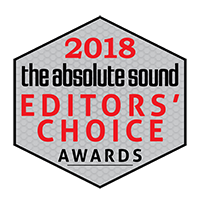
| Up to 5 Year Warranty | 15-Day Money-Back Guarantee | Designed and Built in USA |
|---|